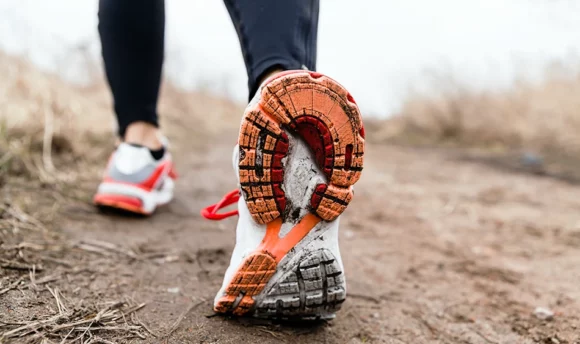Treadmill vs. Outside Running: What Are the Differences?
Today, we unveil the nuances between running outside vs. running on a treadmill. How different are they, and does this influence their respective health benefits? Join us and find out!

Over the years, there has been a long-standing argument about which exercise is better: treadmill running or outside running. Running outside forces you to run based on the nature of the terrain, while treadmill running pushes you to maintain the same pace and intensity all through.
In reality, both methods are efficient cardio workouts and offer abundant health benefits.
In this article, we will be looking to settle the age-old debate that involves running outdoors versus on a treadmill. Thus, we will be looking at the pros and cons of each exercise variation and how they stack up to each other.
In addition, we will be answering some of the most common questions that pop up when discussing both exercises.
What Are the Differences Between Treadmill and Outside Running?
It is easy to see the differences between running on a treadmill and outdoor running. Since the pandemic’s start, more people have turned to indoor running to log their regular aerobic exercise.
That is because it offers increased workout precision, lower impact, and convenience, although at a higher cost.
On the flip side, outdoor running is more engaging, diverse, and less expensive, with the occasional weather and injury risks.
But how effective is treadmill running compared to traditional outdoor running? In that regard, let us look at how they stack up against each other.
Outside Running Pros and Cons
Outdoor running involves running on a track, trail, pathway, or any in-nature terrain. As a result, outdoor runs host many benefits while still having a fair share of risks. As such, we will be analyzing the pros and cons outdoor runners stand to benefit.
Pros
#1 Low cost
This is one of the biggest pros of outdoor running: it is free. Well, it is, except for the mandatory running gear. On the bright side, you do not need to acquire a gym membership or purchase fancy equipment. All you need is a good pair of running shoes, a bottle of water, and the will to exercise.
#2 Ease of access
The accessibility of outdoor running is another advantage when you decide to run outdoors. By accessibility, we mean the ability to exercise anytime and anywhere with little to no constraint.
It grants you the power to exercise when traveling, doubling as a means to explore new routes and places. But, again, you are not tied down by gym schedules or equipment availability.
It would help if you accounted for safety measures, such as wearing reflective clothing and settling for pre-planned running routes.
#2 Lateral agility
Outdoor running engages your musculoskeletal system more than running on a treadmill. Your glutes and hamstrings receive a truckload of stimulation as you battle hills, valleys, twists, turns, and other varied terrains.
When it comes to physical prowess, the results from running outdoors speak for themselves. You experience significant growth in muscle size, tone, and strength.
#3 Nature-centric
As much as treadmill companies are hoping to revolutionize running through technological advancements, running indoors can never replicate natural settings and the feelings that come with outdoor running.
Running outside comes with multiple flavors such as fresh air, diverse terrains, naturally occurring inclines, declines, etc.
These elements account for developing different running skills like breath control, stride management, pace setting, and many more.
Aside from these features, substantial research points to the fact that people enjoy exercising more when done outside. Wallowing in nature positively impacts mental and emotional well-being – a necessity for longevity and overall health.
It helps alleviate stress and anxiety while boosting sleep quality, mood, and cognitive abilities.
#4 Road event preparedness
Outdoor running is the best way to prepare for racing events. There are no compromises when it comes to getting you prepared for your next road event.
Unlike running outside, running solely on a treadmill will not condition your musculoskeletal system to conquer the different situations you encounter on race day.
#5 Higher calorie burn
You can burn more calories when you exercise outdoors than in a more controlled environment. At least, that is what experts think. The deal with this is that you have to take on nature itself, which offers a bigger opportunity to burn calories.
Experts opine that running through wind resistance, high temperature, and hilly terrains make for a compound aerobic and resistance training, like pulling a chute behind you while you run.
Conversely, running on surfaces like gravel, sand, or asphalt will account for different energy expenditures. Expending more energy while you exercise increases your calories burned.
Cons
#1 Higher injury risk
Preemptive research conducted by the University of Applied Sciences in the Netherlands revealed knee injuries to be the most common running-related injury, followed by lower leg, foot, and ankle injuries.
Interestingly, there is no concrete evidence that proves running is the cause of bad knees during old age. However, some studies prove this theory false, an example being the 21-year longitudinal study that linked running with reduced disability in later life.
But exercising outdoors exposes you to many factors that ultimately increase your chances of injury. These factors affect your joints, which could translate to overuse injuries.
The solution: running on softer surfaces like grass, dirt paths, and hard-packed sand since they take away a chunk of the landing impact.
#2 Time and weather limitations
This is perhaps the biggest flaw with running outside – not being able to run whenever you want to. In addition, you are subject to inclement weather conditions, regardless of whether or not you are running in winter or summer.
Running outside during harsh weather conditions could put you in some unfavorable positions. For example, heavy rain and snowfall can make running trails slippery, while heat and humidity will result in dehydration and heat exhaustion. You also need to account for wind resistance.
Again, you also have to worry about the time you go on your runs. With recent temperature rises, running during midday leaves you at the mercy of the scorching sun, and if it gets too dark, you have to worry about cars, cyclists, wildlife, and other potential hazards.
#3 Safety
This is one of the least talked about aspects of running outdoors. However, with current crime rates increasing over the weeks, it becomes increasingly dangerous for outdoor runners, especially women.
There are preventive measures for you, such as getting a running buddy, running in well-trafficked areas, running during the daytime, sharing your location with a trusted party, etc.
Treadmill Running Pros and Cons
Like running outside, running indoors has its fair share of benefits and drawbacks. Let us take a closer look at them.
Pros
#1 Pace control
One area where running outside falls short is running at a consistent pace throughout your run. Running on a treadmill gives you the ability to set your pace at any point in time.
Treadmill runners can easily keep track of their pace and mileage, which is a key ingredient for people trying to replicate certain race conditions.
#2 Less injury risk
The treadmill machine offers better impact cushioning, which accounts for less stress on your joints. Switching to an incline can also replicate certain outdoor conditions like hill running.
As such, you can build cardiovascular endurance and muscle strength with treadmill running without stressing your knees and ankles.
#3 Highly convenient
Investing in a treadmill machine is one of the smartest ways to improve your home workout. Treadmill runners have the luxury of working out at any time, avoiding outdoor hazards, multitasking, and staying away from inclement weather.
Cons
#1 Boredom
You do not have the luxury of enjoying scenic environments if you stick to your treadmill machine. Listening to music or a podcast might alleviate the boredom, but your routine becomes monotonous after a while.
#2 Expensive
Considering how many people preach about how free running is, owning a treadmill is quite an expensive option. Then again, you might opt for a gym membership, but it still amounts to spending a handful.
#3 Lateral agility
You cannot build solid lateral agility running on a treadmill as you would running outdoors. That is because the treadmill belt constantly pushes you forward, leading to less use of your hamstrings.
In addition, you are unable to prepare for races that include varying elevation changes correctly. As such, since you cannot run downhill, your hamstrings and anterior tibialis muscles receive minimal stimulation.
Burned Calories
At the base level, both options offer similar calorie burn benefits. Many experts even argue that the difference in calories burned between them is negligible. Still, any anecdotal experiment supports running outside as the best for calorie burning.
That is because you have to fight against the wind, temperature, topography, and other obstacles that will work your muscles more. Therefore, more muscle activation alternately equals more energy expenditure, facilitating more calorie burn.
Talking about the numbers, a 125-pound person burns 240 calories running at 5 miles per hour for 30 minutes. Conversely, if the same person were to switch to the treadmill, they would burn about 375 calories.
Muscle Gain Comparison
Again, running outdoors offers you more muscle gain benefits than a treadmill. Not to say that treadmill training will not result in muscle growth and strength.
But, pacing through different surfaces, terrains, and elevation changes increases your chances of muscle hypertrophy.
That way, your quads, hamstrings, glutes, calves, and upper body muscles develop significantly.
Price Comparison
Running outside is a far cheaper option than on a treadmill. However, even if you opt for running at the gym rather than owning a treadmill, the total cost still exceeds running outside significantly.
If you choose to go to a gym, you need to consider the cost of getting a membership, gym frequency, and accessories like body weights and fitness apps.
If you decide to own a treadmill, you must consider the cost of purchasing one (treadmill prices typically range upwards of $100) as well as the cost of ongoing maintenance operations.
Impact on Knees
With running being a high-impact exercise, the chances of overloading your joints, mainly your knees, pose a concern for everyone.
However, research states that wearing the appropriate running shoes will lessen the impact on your musculoskeletal system as your foot strikes the ground.
Still, it does leave a negative impact on your joints. In fact, the route you choose to take, whether running outdoors or treadmill running, factors little into the potential injury risk.
One peculiar difference between running on a treadmill and outdoor running lies in the length of each stride. Research reveals that runners typically run with a shorter stride when running on a treadmill compared to trail running. In addition, treadmill runs account for a higher overall stride rate.
The combination of overall stride rate and shorter stride length accounts for less impact, which helps protect your hips, knees, and ankles.
In contrast, most treadmills come with belts that increase the cushioning effect, absorbing the impact of each foot strike. This further reduces the risk of joint problems.
On the bright side, there are ways to minimize the damages caused by running. Aside from purchasing a proper running shoe, you can engage in knee exercises, wear knee straps, use ice packs, and maintain proper running posture.
Weight Loss Comparison
For you to lose weight, you must be able to create and sustain a caloric deficit. That means that you must be able to burn more calories than you consume daily.
According to Harvard Health Publishing, to lose 1 pound in a week, a benchmark most experts regard as safe and sensible, you should reduce your daily food intake by 500 to 1,000 calories. The goal is to go under your total weight-maintenance calories to kickstart your calorie deficit.
However, coming down to the ongoing debate, research by fitness experts show little evidence that supports any claim suggesting a difference in weight loss capacity between running outdoors.
Therefore, integrating any of these workouts into your routine will burn enough calories to fast-track a reduction in body weight if you only exercise regularly.
FAQs
It is easier to run on most treadmills than going on an outdoor run.
You typically burn more calories running outside since you encounter more resistance while training.
It comes down to personal preference when exploring your running options. Option one allows you to enjoy the great outdoors, fresh air, etc. Option two gives you more control over your training.
It is good to run on a treadmill, especially if you have sensitive joints, since it dissipates a significant amount of impact.
A Word From Our Coach
From a professional standpoint, it is easy to say that either exercise will see you through your fitness journey. They offer similar health benefits, with a fair share of drawbacks, but exercising caution will save you some stress.
Irrespective of your choice, seeking health or medical advice should be at the top of your priority list. Furthermore, proper diet and rest are just as important as exercising. Combining all three practices will see you live a long, healthy life.
Conclusion
At the end of the day, there is no right or wrong answer when picking a workout to add to your routine. Instead, it all comes down to which activity you prefer most as both generally offer the same benefits while maintaining their pros and cons.
If you prefer an outdoor run because of fewer limitations, then go for it. If you prefer running on a treadmill, do not hold back. Keep training, and you will see results.

















































 Select your language:
Select your language: 








